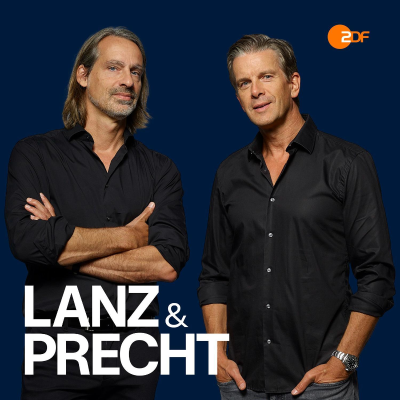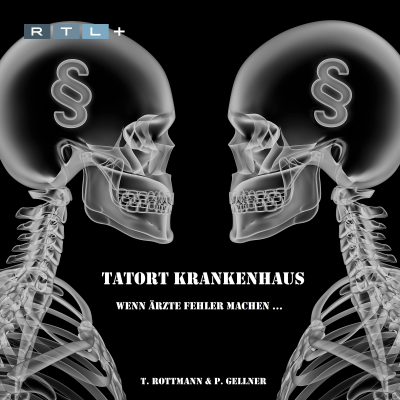
APES vs.
Podcast von Jessie Howington
Nimm diesen Podcast mit

Mehr als 1 Million Hörer*innen
Du wirst Podimo lieben und damit bist du nicht allein
Mit 4,7 Sternen im App Store bewertet
Alle Folgen
62 FolgenAPES vs Saving the Rainforest rev1
In this Episode, Julianna Babcock and Caroline Mohler discuss the lesser-known environmental issue of bird endangerment. Why are the populations declining? How does it affect the environment? This podcast was reviewed by Jessie Howington Disclaimer: We are high school students who are making this podcast for a project. We are not actual experts or researchers on the subject. Thaxter, C. B., Buchanan, G. M., Carr, J., Butchart, S. H., Newbold, T., Green, R. E., ... & Pearce-Higgins, J. W. (2017). Bird and bat species' global vulnerability to collision mortality at wind farms revealed through a trait-based assessment. Proceedings of the Royal Society B: Biological Sciences, 284(1862), 20170829. Pearce‐Higgins, J. W., Stephen, L., Langston, R. H., Bainbridge, I. P., & Bullman, R. (2009). The distribution of breeding birds around upland wind farms. Journal of Applied ecology, 46(6), 1323-1331. Dauphiné, N. I. C. O., & Cooper, R. J. (2009, October). Impacts of free-ranging domestic cats (Felis catus) on birds in the United States (Vol. 205). Loss, S. R. (2013, December 12). The impact of free-ranging domestic cats on wildlife of the United States. Nature Communications. https://www.nature.com/articles/ncomms2380?error=cookies_not_supported&code=640c40cd-1daf-4fb1-893d-855274574a19#:%7E:text=Free%2Dranging%20domestic%20cats%20have,multiple%20wildlife%20extinctions%20on%20islands.&text=We%20estimate%20that%20free%2Dranging,the%20majority%20of%20this%20mortality [https://www.nature.com/articles/ncomms2380?error=cookies_not_supported&code=640c40cd-1daf-4fb1-893d-855274574a19#:%7E:text=Free%2Dranging%20domestic%20cats%20have,multiple%20wildlife%20extinctions%20on%20islands.&text=We%20estimate%20that%20free%2Dranging,the%20majority%20of%20this%20mortality]. Marra, P. P., & Santella, C. (2017). Cat Wars. Princeton University Press. https://press.princeton.edu/books/hardcover/9780691167411/cat-wars [https://press.princeton.edu/books/hardcover/9780691167411/cat-wars] Strycker, N. (2021, May 3). To save birds, should we kill off cats? Animals. https://www.nationalgeographic.com/animals/article/essay-to-save-birds-should-we-kill-off-cats [https://www.nationalgeographic.com/animals/article/essay-to-save-birds-should-we-kill-off-cats] Hallmann, C. A. (2014, July 9). Pesticides linked to bird declines. Nature. https://www.nature.com/articles/nature13531?error=cookies_not_supported&code=84a4c853-5af4-4120-bd8c-a3a7129a314a State of The Birds. (2009). Birds as Environmental Indicators. Bird Friendly Iowa. https://birdfriendlyiowa.org/Pages/BirdFriendlyIowa.aspx?pg=6#:%7E:text=A%20decline%20in%20bird%20numbers,species%2C%20and%20many%20other%20impacts.&text=Birds%20provide%20insect%20and%20rodent,in%20tangible%20benefits%20to%20people
We take a look at what proof of work is and explore some statistics on the energy used in cryptocurrency mining. Written by Beckett Shulman. Sources: Nakamoto, S. (2009). Bitcoin: A peer-to-peer electronic cash system Digiconomist. (2021). Bitcoin Energy Consumption. Retrieved from https://digiconomist.net/bitcoin-energy-consumption [https://digiconomist.net/bitcoin-energy-consumption] BP Statistical review of world energy (2020) published online at http://ourworldindata.org/ retrieved from ‘https://ourworldindata.org/electricity-mix [https://ourworldindata.org/electricity-mix]’ Blandin, A., Dr. Pieters, G., Wu, Y., Eisermann, T., Dek, A., Taylor, S., & Njoki, D. (2020). 3RD GLOBAL CRYPTOASSET BENCHMARKING STUDY. Retrieved from: https://www.jbs.cam.ac.uk/wp-content/uploads/2021/01/2021-ccaf-3rd-global-cryptoasset-benchmarking-study.pdf [https://www.jbs.cam.ac.uk/wp-content/uploads/2021/01/2021-ccaf-3rd-global-cryptoasset-benchmarking-study.pdf]
Join show host Ashwath Arun with special guest Jackson Lyman to discuss crypto currency, mining it, and the effects mining has on the environment.
In this episode, Emily Ford discusses the issue of marine microplastic pollution. Some topics covered include the negative effects of microplastics on the environment, scientific research on cleaning technologies, and a discussion of what individuals and nations can do to prevent further pollution. Disclaimer: This podcast was created by a high school student playing the role of a researcher. References: Shim, W. J., & Thomposon, R. C. (2015). Microplastics in the ocean. Archives of environmental contamination and toxicology, 69(3), 265-268. https://doi.org/10.1007/s00244-015-0216-x Mato, Y., Isobe, T., Takada, H., Kanehiro, H., Ohtake, C., & Kaminuma, T. (2001). Plastic resin pellets as a transport medium for toxic chemicals in the marine environment. Environmental science & technology, 35(2), 318–324. https://doi.org/10.1021/es0010498 Arossa, S., Martin, C., Rossbach, S., & Duarte, C. (2019). Microplastic removal by Red Sea giant clam (Tridacna maxima). Environmental Pollution, 252, 1257–1266. https://doi.org/10.1016/j.envpol.2019.05.149 Liu, S., Leung, M., Fang, J., & Chua, S. (2021). Engineering a microbial ‘trap and release’ mechanism for microplastics removal. Chemical Engineering Journal, 404. https://doi.org/10.1016/j.cej.2020.127079 Henderson, L., & Green, C. (2020). Making sense of microplastics? Public understandings of plastic pollution. Marine Pollution Bulletin, 152, 110908. https://doi.org/10.1016/j.marpolbul.2020.110908 Xanthos, D., & Walker, T. (2017). International policies to reduce plastic marine pollution from single-use plastics (plastic bags and microbeads): A review. Marine Pollution Bulletin, 118(1–2), 17–26. https://doi.org/10.1016/j.marpolbul.2017.02.048 Environmental Protection Agency. (2021, April 29). Chemicals and Toxics Topics. https://www.epa.gov/environmental-topics/chemicals-and-toxics-topics























